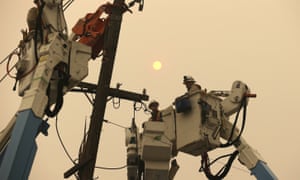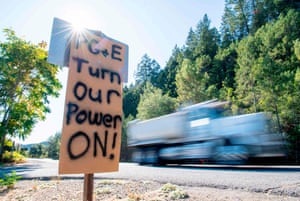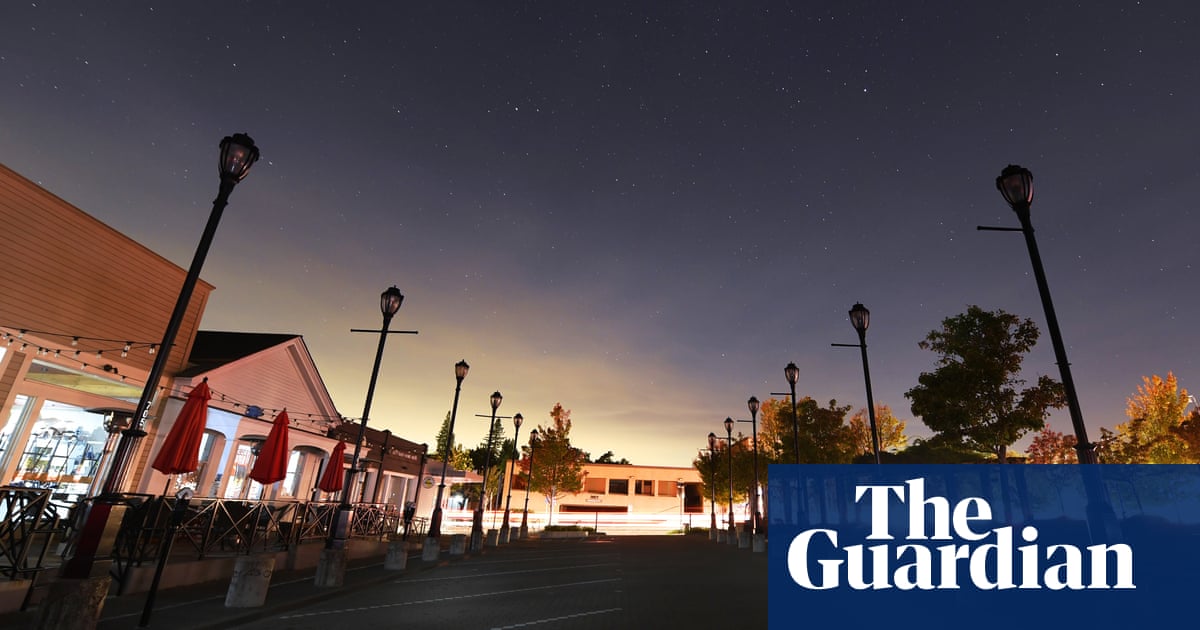California’s wildfire risk keeps getting worse. Now a decade of blackouts lie ahead
The states 2019 fire season was relatively mild, but included nine public safety power shutoffs. Is it making the system safer?

In 2019, millions of Californians experienced a wildfire safety blackout, some for nearly a week at a time, as the troubled utility company Pacific Gas & Electric and other investor-owned utilities grappled with replacing one devastating disaster with another, comparatively manageable one.
2019 was not an anomaly, but the beginning of a new way of life for many California residents. While de-energization for fire safety has been state policy for more than a decade, it had never before been used on such a mass scale. According to utility experts, politicians and PG&E, customers can expect many more years of blackouts to come, as fire risk in Californias hills only increases.
Wildfire blackouts could be Californias new normal for the next 10 to 30 years, or even longer, the Senate energy committee chair, Lisa Murkowski, told a hearing on utility and fire safety in December.
Ten or more years of blackouts ahead
In stark contrast to recent years past, Californias 2019 wildfire season was relatively mild: just 732 structures destroyed, compared with the tens of thousands and dozens killed in 2017 and 2018.
The crisis of 2019s fire season was less the fires themselves, and more the actions taken that were meant to prevent fires from igniting in the first place. Intended as a measure of last resort, California power utilities conducted nine public safety power shutoffs in the fall of 2019 in an effort to reduce wildfire risk in hot, windy weather conditions and to reduce liability costs to utilities.
Those costs following deadly wildfires in 2017 and 2018 fires linked to equipment belonging to PG&E, drove the company to file for bankruptcy in 2019, and to reconsider how to manage the grid during future fire weather events.
Bill Johnson, PG&Es CEO, has at different times claimed his utility the largest in the state would resort to blackouts for the next three, five or 10 years.
The southern California investor-owned utility San Diego Gas and Electric is the poster child for safety, said Michael Wara, the director of the climate and energy policy program at Stanfords Woods Institute for the Environment. SDG&E has been de-energizing its lines during fire weather events for more than a decade.
Why is it that PG&E thinks its going to be able to replicate what San Diegos done and do even better over a larger area in less time? Its not impossible, but its an enormously challenging task, said Wara.
PG&Es post-de-energization reports to the state utilities commission showed a number of hazards after each event, from damaged lines and conductors to fallen trees. After its largest shutoff at the end of October, the utility noted more than 100 individual hazards.
Would every piece of system damage that they noted have caused a fire? Probably not. But some of them probably would have, said Wara. [Public safety power shutoff policy] is so unpopular, and it impacts so many people, I worry we will be pushed to be overly optimistic about other potential avenues for creating safety.
Despite the widespread shutoffs, PG&E equipment was still tied to igniting several fires in the fall of 2019, including the Kincade fire in Sonoma county, which destroyed 352 structures and burned more than 77,000 acres.
Its not clear to me that the system is that much safer than 2017, Wara said. The safety that we had this season and the absence of fires during these dangerous wind events was due to the fact that the wires werent hot.

Costs and consumers
Fire risk in the California hills will rise precipitously through the middle of the century, according to a 2018 report for Californias Fourth Climate Change Assessment, with big new hazards in areas where high voltage transmission lines run through the mountains and connect California to clean energy out of state.
In the face of that rising danger, the public safety power shutoff is a utilitys fastest and cheapest means of reducing fire risk.
I want to assure you that we do not expect an annual repeat of what we went through this fall. We are working hard now to narrow the scope and duration of future safety shutoffs and minimize their customer impact as much as possible, Johnson told the Senate hearing.
But he also took credit for the less destructive 2019 fire season: PG&Es [public safety power shutoff] program achieved its singular goal: there was no loss of life during wildfires in 2019.
Not everyone in California is convinced that success is PG&Es to claim.
Will Abrams and his family lost their home in the 2017 Tubbs fire that destroyed more than 5,600 structures and killed 22 people. They were forced to evacuate again from the 2019 Kincade fire.
The fact that our firefighters went in and did an amazing job, learned from prior fires and got these more under control shouldnt be a PG&E victory lap, said Abrams. I would argue that the shutoffs provide a disincentive for other mitigation. Because if you can just pull the power, you dont have to do the vegetation management and the microgrids and all the other stuff you need to do.
All of that other stuff is enormously expensive and labor-intensive and will take years to complete.
And the costs of installing stronger poles and trimming trees will not just be borne by the companys profits. CEO Johnson has said ratepayers will not be on the hook for the costs associated with the companys bankruptcy, but they will have to foot some of the bill for grid upgrades and maintenance. Customers saw their rates increase again on 1 January, though not as much as the utility would have liked. PG&E customers already pay some of the highest prices in the country for power, and those prices will only increase.
PG&E expects to reinforce 7,100 miles of line in fire risky areas in the next 12 to 14 years. To date, the utility has completed just 129 miles.

PG&E a convicted felon to hold accountable
To some, PG&Es bankruptcy initially seemed like an opportunity to restructure the troubled utility in favor of creating a more reliable and resilient grid to weather future climate change one that wouldnt necessitate extensive annual blackouts.
This bankruptcy represents a closing window of opportunity to change course so that not only is PG&E a proven safe and reliable provider of energy but so the state has a way forward to address wildfires and climate change, said Abrams, who has filed motions in the case advocating for more significant restructuring and transparency in the process.
But the California governor, Gavin Newsom, rejected PG&Es plan to leave bankruptcy, calling it woefully short of reorganizing the company to provide safe, reliable, and affordable service to its customers.
In 2018, the state legislature passed a bill aimed at heading off that bankruptcy but providing new funding sources for fire-burdened utilities and requiring new wildfire safety plans which ultimately included de-energization. In 2019, at Newsoms urging, the legislature passed new legislation that created a wildfire liabilities fund, and placed a June deadline for PG&E to leave bankruptcy.
Critics argued that both bills were essentially bailouts for investor-owned utilities. I voted no on both of them I thought that they shifted financial responsibility on to Californians and neglected to raise public safety to the paramount priority, said assembly member Marc Levine. De-energization was a massive failure.
While Californias fires have been orders of magnitude more destructive than the blackouts, they touch just a fraction of the millions who had their lights turned off in 2019 making de-energization a hotter problem for politicians and PG&E to solve.They have just a few months before the next fire season begins.
Three new pieces of legislation introduced in the state legislatures first week back in 2020 aimed at addressing a troubled PG&E, regardless of the bankruptcys resolution.
A new proposal from Levine would install a public administrator from the state regulatory commission for a period of six months to oversee all the functions of a floundering investor-owned utility.
We need to stop treating PG&E like a business to keep solvent and more like a convicted felon that needs to be held accountable, said Levine.

Assembly member Kansen Chu authored two bills directly aimed at de-energization which would authorize state regulators to determine if utilities should compensate customers after each power shutoff, and require utilities to support customers who rely on power for medical needs.
Theres so much ageing infrastructure, but thats not going to be fixed very soon, Chu said. In the meantime I want them to be more responsible and more careful with their shutoffs because the first shut off was a disaster. But leaving the power on in the meantime, said Chu, is probably more devastating.
